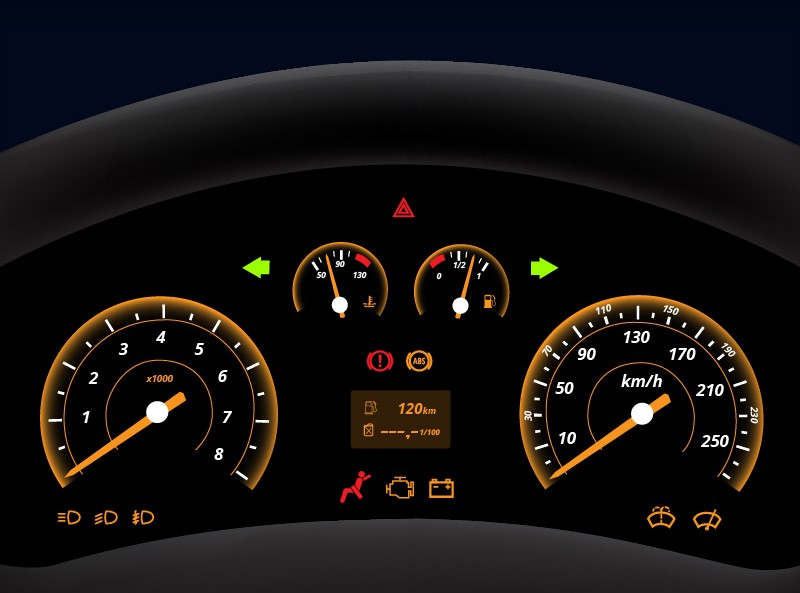The alternator plays a critical role in your vehicle’s electrical system, as it is responsible for charging the battery and powering various electrical components while the engine is running. The alternator warning light, often depicted as a battery symbol or the letters “ALT” or “GEN,” is an important indicator on your vehicle’s dashboard. When this light illuminates, it signifies potential issues with the charging system. In this article, we will discuss the significance of alternator warning lights, common signs of charging system problems, and the necessary steps to address them.
Understanding Alternator Warning Lights: The alternator warning light serves as a visual cue that the charging system is experiencing difficulties. When the light illuminates, it indicates that the alternator may not be functioning optimally, which can lead to inadequate charging of the battery or a complete loss of electrical power. It is important to pay attention to this warning light, as it can prevent inconvenient breakdowns and potential damage to your vehicle’s electrical components.
Signs of Charging System Issues:
- Illuminated Warning Light: The most obvious sign of a charging system problem is the illumination of the alternator warning light on your dashboard. If the light remains on or flickers while driving, it indicates that the alternator is not generating sufficient power to charge the battery.
- Dimming or Flickering Lights: When the alternator is not functioning correctly, you may notice your headlights, interior lights, or dashboard lights dimming or flickering, especially at idle or when additional electrical loads are activated. This occurs because the battery alone cannot provide the necessary power, causing a drop in voltage.
- Weak or Dead Battery: A failing alternator can result in an undercharged or completely drained battery. If you find that your battery is consistently weak, requiring frequent jump-starts or replacements, it could be a sign of an alternator problem. Keep in mind that other factors, such as extreme temperatures or a faulty battery, can also contribute to battery issues.
- Electrical System Malfunctions: The alternator provides power to various electrical components, including the radio, air conditioning, power windows, and more. If these components start to malfunction or exhibit erratic behavior, it could indicate an inadequate power supply from the alternator.
- Strange Noises: A failing alternator may produce unusual noises, such as grinding, whining, or squealing sounds. These noises can be an indication of a worn-out belt, faulty bearings, or other mechanical issues within the alternator.
Steps to Address Charging System Problems:
- Check Battery Connections: Start by inspecting the battery terminals and cables for loose or corroded connections. Ensure they are clean, tight, and free from any corrosion. Loose or corroded connections can hinder the flow of electrical current and affect the charging system’s performance.
- Measure Battery Voltage: Use a voltmeter to measure the voltage across the battery terminals. A fully charged battery should read around 12.6 volts. If the voltage is significantly lower, it may indicate a charging system problem.
- Test the Alternator: A professional mechanic can perform a thorough diagnostic test to assess the alternator’s output and overall performance. They can check the charging voltage, current, and the condition of the alternator’s internal components.
- Inspect Belts and Pulleys: Damaged or worn-out belts can impact the alternator’s operation. Inspect the belts for signs of wear, cracks, or looseness. Also, check the condition of the pulleys and ensure they rotate smoothly.
- Seek Professional Assistance: If you continue to experience charging system issues or if the warning light remains illuminated after performing basic checks, it is best to consult a qualified mechanic. They have the necessary expertise and equipment to diagnose and repair complex charging system problems.
The alternator warning light serves as an important indicator of potential charging system issues in your vehicle. Ignoring this warning can lead to battery drain, electrical component failures, and even stalling of the vehicle. By recognizing the signs of charging system problems and taking timely action, such as checking battery connections, measuring voltage, and seeking professional assistance when needed, you can prevent major disruptions and ensure the reliable performance of your vehicle’s electrical system. Remember, regular maintenance and prompt repairs are essential to keep your alternator and charging system in optimal condition.











